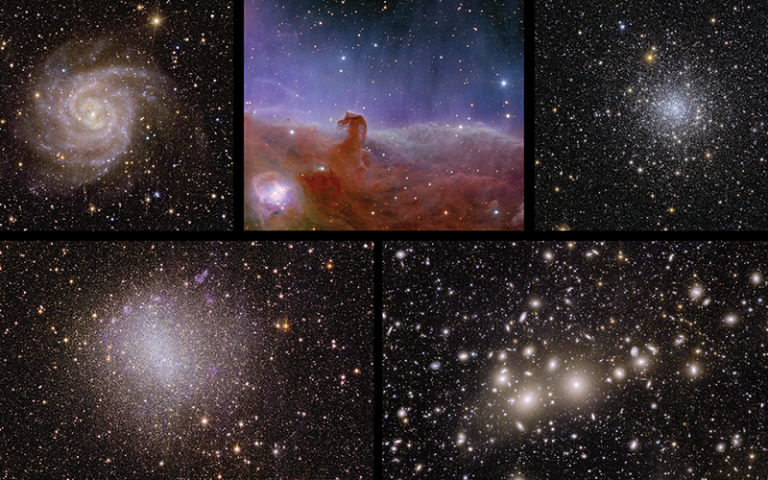The European Space Agency (ESA) mission Euclid, whose massive optical camera was built by an international team led by UCL researchers, has released its first full-colour images of the cosmos.

This is the first time a telescope has been able to create such razor-sharp astronomical images across such a large patch of the sky, and looking so far into the distant Universe.
Euclid, the dark Universe detective, has a difficult task: to investigate how dark matter and dark energy have made our Universe look like it does today. 95% of our cosmos appears to be made of these mysterious 'dark' entities. But we don't understand what they are because their presence causes only very subtle changes in the appearance and motions of the things we can see.
To reveal the 'dark' influence on the visible Universe, over the next six years Euclid will observe the shapes, distances and motions of billions of galaxies out to 10 billion light-years. By doing this, it will create the largest cosmic 3D map ever made.
What makes Euclid's view of the cosmos special is its ability to create a remarkably sharp visible and infrared image across a huge part of the sky in just one sitting.
The images released today showcase this special capacity: from bright stars to faint galaxies, the observations show the entirety of these celestial objects, while remaining extremely sharp, even when zooming in on distant galaxies.
They were created by combining data from Euclid's two instruments: VIS, a visible light camera, and the Near Infrared Spectrometer and Photometer (NISP), which captures light from the infrared spectrum.
Professor Mark Cropper (Mullard Space Science Laboratory at UCL), who has led on designing and developing the VIS optical camera over 16 years, working with teams at UCL, Open University and across Europe, said: "The quality of these very beautiful images show that Euclid is poised to carry out its mission to study dark matter and dark energy and will enable a wide range of other science across the whole of astronomy.
"Beyond the more prominent objects the sky is filled with background faint galaxies seen as they were long ago.
"The Euclid survey will cover most of the sky not obscured by our Milky Way and it is these objects which will tell us about dark matter and dark energy."
Professor Carole Mundell, ESA Director of Science, said: "Dark matter pulls galaxies together and causes them to spin more rapidly than visible matter alone can account for; dark energy is driving the accelerated expansion of the Universe. Euclid will for the first-time allow cosmologists to study these competing dark mysteries together.
"Euclid will make a leap in our understanding of the cosmos as a whole, and these exquisite Euclid images show that the mission is ready to help answer one of the greatest mysteries of modern physics."
René Laureijs, ESA's Euclid Project Scientist, said: "We have never seen astronomical images like this before, containing so much detail. They are even more beautiful and sharp than we could have hoped for, showing us many previously unseen features in well-known areas of the nearby Universe. Now we are ready to observe billions of galaxies, and study their evolution over cosmic time."






